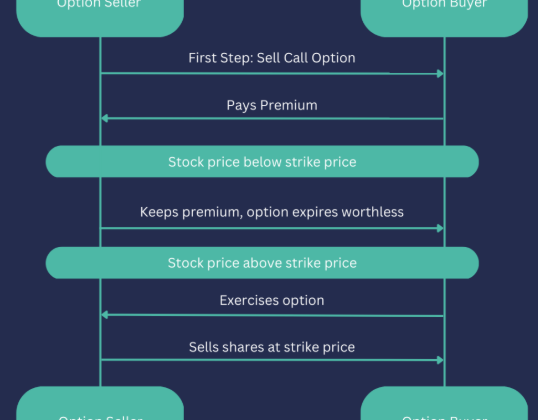
In the world of commercial real estate (CRE) investing, the role of a broker is crucial. These professionals guide investors through buying, selling, or leasing properties, ensuring that transactions go smoothly. For investors, understanding the responsibilities and expertise that a commercial real estate broker brings to the table is essential. In this blog, we’ll explore the role of a commercial real estate broker, why they are indispensable, and how they can impact your CRE investments.
What Is a Commercial Real Estate Broker?
A commercial real estate broker is a licensed professional who acts as an intermediary between buyers and sellers, or landlords and tenants in commercial property transactions. These brokers specialize in commercial real estate rather than residential properties and are equipped to handle a range of property types such as office buildings, shopping centers, industrial properties, and more.
To become a broker, individuals must typically complete a series of education hours, pass a licensing exam, and gain experience in the industry. After obtaining their license, brokers can work independently or as part of a real estate firm.
Broker Responsibilities in CRE Transactions
Commercial real estate brokers can represent clients on the buying side, the selling side, or in lease negotiations. Let’s break down their role in each of these scenarios:
Acquisition (Buyer’s Side)
When a real estate investor is looking to buy property, they often hire a broker to help find the right investment. This begins with a conversation where the investor details their criteria—whether it’s a specific type of property, location, or size. Based on these parameters, the broker uses their local market knowledge to identify properties that match the investor’s needs. Brokers can also bring both on-market and off-market deals to the table, helping investors gain access to exclusive opportunities.
Once potential properties are identified, the broker assists with negotiating the terms, handling due diligence, and managing the closing process. The broker’s role concludes once the transaction is completed.
Disposition (Seller’s Side)
When a property owner decides to sell, they often hire a broker to list and market the property. The broker helps create an Offering Memo, which outlines key information about the property, and then markets the property to their network of potential buyers. They handle negotiations and work with the buyer’s broker to manage the logistics of the sale.
The broker’s goal on the seller’s side is to maximize the selling price while ensuring the terms are favorable to the client. They also provide advice on how to best present the property to attract the right buyers.
Leasing Transactions
Commercial brokers aren’t just limited to sales; they are also involved in leasing transactions. On the landlord’s side, brokers help find tenants for vacant spaces and negotiate lease terms. For tenants, brokers assist in finding spaces that meet their specific needs, such as size, location, and amenities.
Brokers on both sides work to secure the best deal possible for their clients. For landlords, this means achieving the highest rental rates and the longest lease terms. For tenants, brokers aim to secure the most favorable lease terms, which might include lower rent or more flexible lease durations.
Financial and Market Analysis
A key part of a broker’s role involves financial and market analysis. They help clients understand the financial viability of a property by creating detailed proformas that project future income and expenses. These documents are vital when evaluating whether a property is a good investment.
Brokers also conduct demographic and market analysis to provide clients with insights into the surrounding area’s economic conditions. This could include data on population growth, key industries, major employers, and other factors that could affect the performance of a property.
Differences Between Commercial and Residential Brokers
While both commercial and residential brokers share similarities, they specialize in different types of properties. Commercial brokers handle business-related properties, whereas residential brokers focus on homes and apartments. Additionally, the licensing and educational requirements for commercial brokers are generally more demanding than those for residential brokers.
Another key distinction is that commercial brokers need a deeper understanding of financial analysis and market trends due to the complexities of commercial real estate transactions.
Commercial Brokers vs. Commercial Real Estate Agents
It’s also important to distinguish between brokers and agents within the commercial real estate world. Commercial real estate agents are licensed professionals who can help buy, sell, or lease properties but typically work under the supervision of a broker. Brokers, on the other hand, have additional qualifications that allow them to own and operate their own real estate firms. Brokers assume greater responsibility and are involved in more complex aspects of the business.
Types of Commercial Brokers
There are three main types of commercial brokers:
- Buy-Side Brokers: These brokers represent buyers looking to acquire properties. They assist investors in finding suitable properties and negotiating terms.
- Sell-Side Brokers: Also known as listing brokers, they represent property owners who want to sell their assets. They handle marketing, negotiations, and ensure the property is presented in the best possible light to potential buyers.
- Leasing Brokers: These brokers specialize in helping landlords lease their properties or helping tenants find spaces that meet their requirements.
Broker Compensation: How Do They Get Paid?
Commercial real estate brokers typically work on commission, which is a percentage of the transaction amount. For sales, this is usually between 4% and 6% of the property’s sale price. The commission is often split between the buyer’s and seller’s brokers. In leasing transactions, brokers are usually paid based on the lease amount, with the landlord typically covering the commission.
For example, if a broker helps sell a property for $10 million with a 6% commission, they would earn $600,000. If another broker represents the buyer, the commission is split evenly, with each broker receiving $300,000.
How to Find a Commercial Real Estate Broker
Choosing the right commercial real estate broker is a critical decision. Investors can find brokers through online searches, referrals, or by networking with industry professionals. Once a potential broker is identified, it’s important to assess their experience, especially in the specific type of property you’re interested in. For instance, a broker specializing in office buildings may not be the best fit for retail space.
After selecting a broker, both parties will sign a legal agreement that outlines the terms of the partnership, including the broker’s commission, responsibilities, and the duration of the agreement.
Investing Through a Real Estate Syndication
While working with a broker can be a time-consuming process, some investors prefer an alternative: real estate syndications. In a syndication, a private equity firm handles all aspects of the investment, including finding and financing the property, managing the asset, and even hiring the broker. This allows investors to contribute capital and receive returns without being involved in the day-to-day complexities of the transaction.















